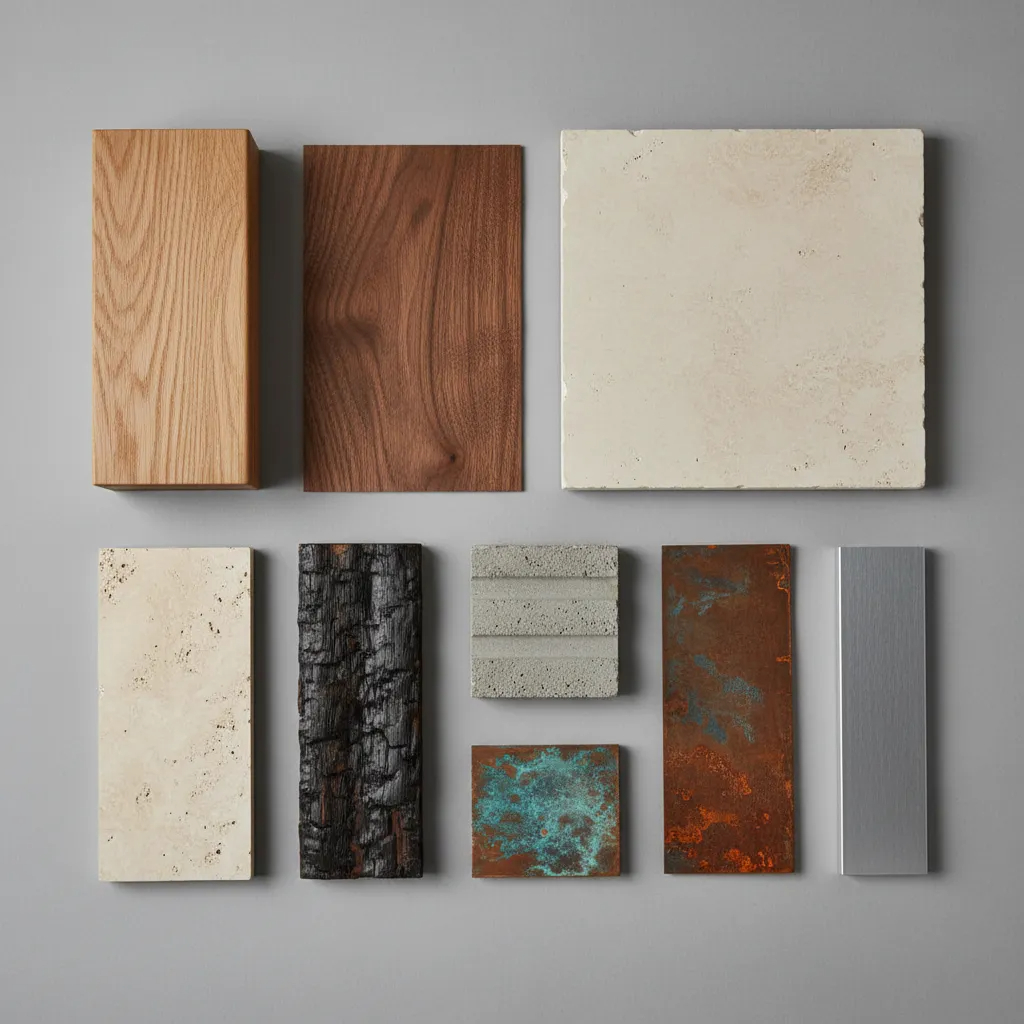Materials & Textures Prompt Library

A compact library of **reliable materials** and phrasing that tends to produce believable, repeatable results across interiors and exteriors. Use these as **prompt atoms** and keep them consistent between options so clients compare design—**not** rendering variance.
- Wood: quarter-sawn oak, charred cedar (shou sugi ban), walnut veneer.
- Stone: honed travertine, limestone, board-formed concrete (texture).
- Metal: patinated copper, weathering steel (corten), brushed aluminum.
Prompt Recipes (Copy-Paste)
Add one or two materials per surface group; avoid mixing too many finishes in a single view.
Wood
quarter-sawn oak, warm tone, subtle cathedral grain, matte finish, tight joinery, realistic edge detail
charred cedar (shou sugi ban), deep black tone, visible wood texture, matte, minimal specular highlight
Stone & Concrete
honed travertine, light beige, soft linear veining, low reflectance, tight grout lines
board-formed concrete, horizontal grain imprint, cool gray tone, slight surface variation, matte
Metals
patinated copper, soft green-blue oxidation, slight variation, low gloss, architectural paneling
weathering steel (corten), warm rust tone, subtle streaking, matte finish, controlled reflectivity
Optional negatives: no plastic shine, no mirror finish, no noisy textures, no tiling seams, no watermark, no logos.
Lighting Compatibility Tips
- Golden hour: warms oak/walnut; keep metals matte to avoid glare.
- Overcast: flattens contrast; add micro-variation to stone/wood for realism.
- Night/blue hour: manage speculars on brass/aluminum; use warm interior key lights.
- Studio/white: ideal for material boards—neutral light reveals true color.
Troubleshooting (Common Defects → Fixes)
- Plastic shine on wood/stone: add “matte” / “low reflectance”; reduce “glossy” terms.
- Tiling seams visible: add “no tiling seams, natural variation, non-repeating pattern”.
- Metal looks painted: specify “brushed / patinated / weathered, visible grain”.
- Noise or grit: add “clean surface, subtle micro-variation, no heavy grain”.
Do / Don’t (Quick Guardrails)
Do
- Limit palette: one hero material + one secondary + one accent.
- Use “matte / low reflectance” for believable architectural finishes.
- Keep camera and lighting consistent across options.
Don’t
- Mix too many finishes in one view.
- Use mirror-like metals unless it’s intentional and controlled.
- Rely on color shifts to fake material changes—describe texture & finish.
Changelog
- 2025-09-25 — Added recipes, negatives, compatibility, and troubleshooting.
- 2025-09-12 — Initial library draft and hero image.